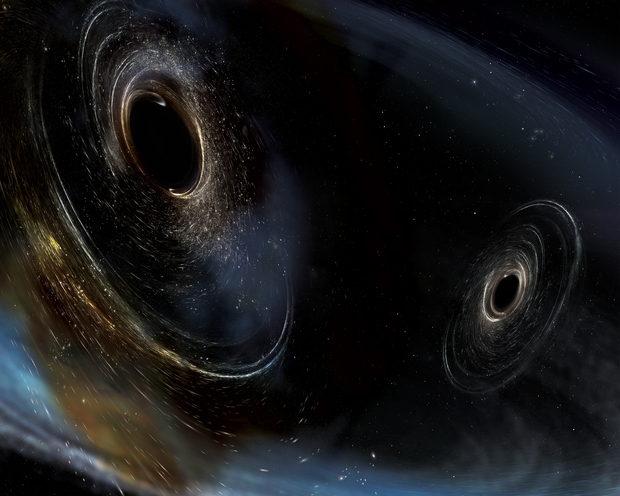Did you feel the universe shake on January 4, 2017? That was just two suns’ worth of mass being converted into gravitational waves, the shockwave from which vibrated everything on the planet by about the width of a single particle.
Okay, so maybe your body is not sensitive enough to pick up on subatomic vibrations, but the gravitational wave telescope known as LIGO – an acronym for Laser Interferometer Gravitational Wave Observatory – heard it loud and clear. The merger of two black holes some three billion light-years hence released such a stunningly powerful gravitational wave that the U.S.-based observatory was able to pick up on the collision, despite its incredible distance from Earth. This marks only the third binary black hole merger signal that has been detected by the still-nascent LIGO observatory.
LIGO scientists created a simulation of that black hole merger, in which you can see the associated gravitational waves rippling out before heightening in the final collision:
The results of this extragalactic black hole collision were published in the American Physical Society’s Physical Review Letters journal last week.
Until the past decade, the notion of a gravitational wave observatory was but a pipe dream. It took years of trial and error to get the two twin observatories, located in Livingston, Louisiana and Hanford, Washington, online and sensitive enough to detect gravitational waves. That’s because gravity is such a weak force that even the most powerful gravitational waves may only move the Earth by the width of a proton or less.
LIGO works by shining a laser down a very long corridor and bouncing it off mirrors multiple times, then observing how it “wiggles” — through which scientists can infer if gravitational waves distorted the laser ever so slightly as the waves passed through. By having two labs (soon three, as an Italian collaboration is set to join) separated by thousands of miles, scientists can watch gravitational waves pass through the Earth as they move between the labs, which allows for a rough pinpointing of location. January’s particular gravitational wave “arrived at Hanford ~3 milliseconds before Livingston,” as the paper’s authors wrote.
The gravitational wave observatory has long been considered a holy grail of sort in astronomy because it completes the trifecta of observational information available to astronomers: gravity, neutrino, and light. While observatories that detect various wavelengths of light have long existed, in the past twenty years they’ve been complemented by neutrino detectors, such as the Antarctic Muon And Neutrino Detector Array at the South Pole. LIGO marks the first successful gravitational wave observatory of its kind.


